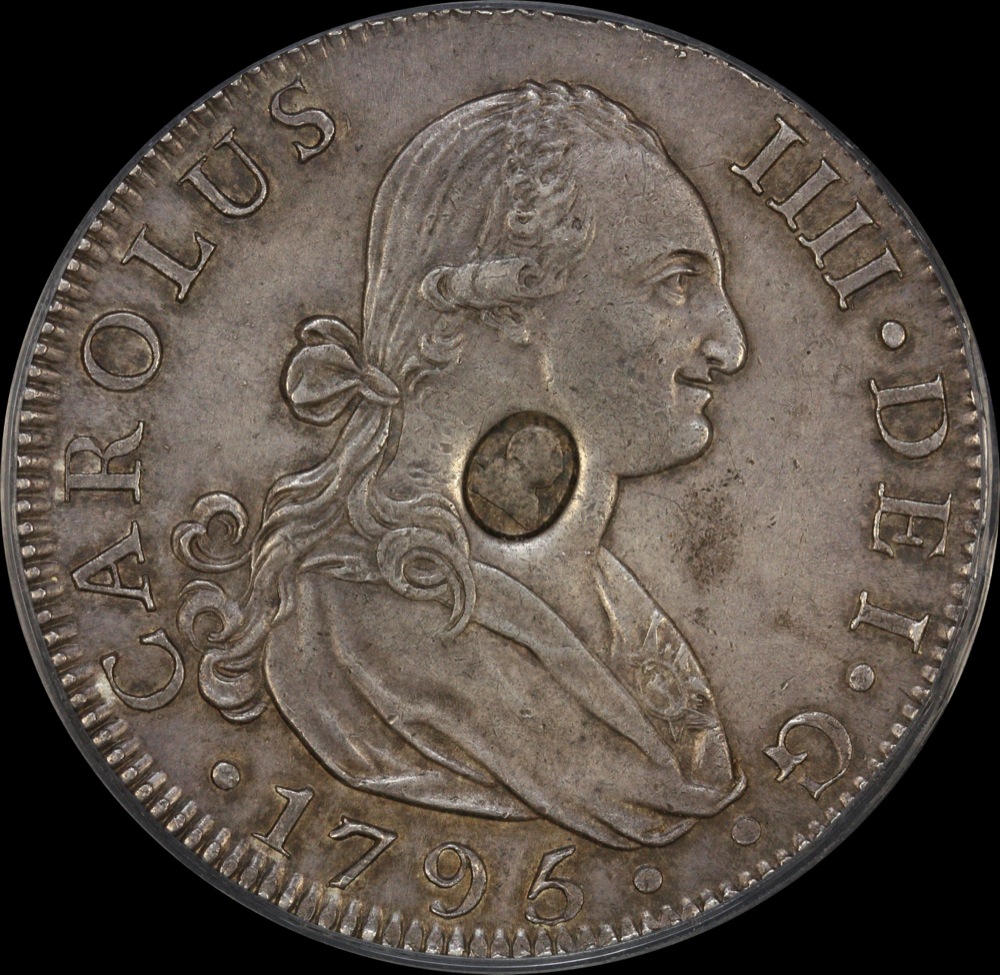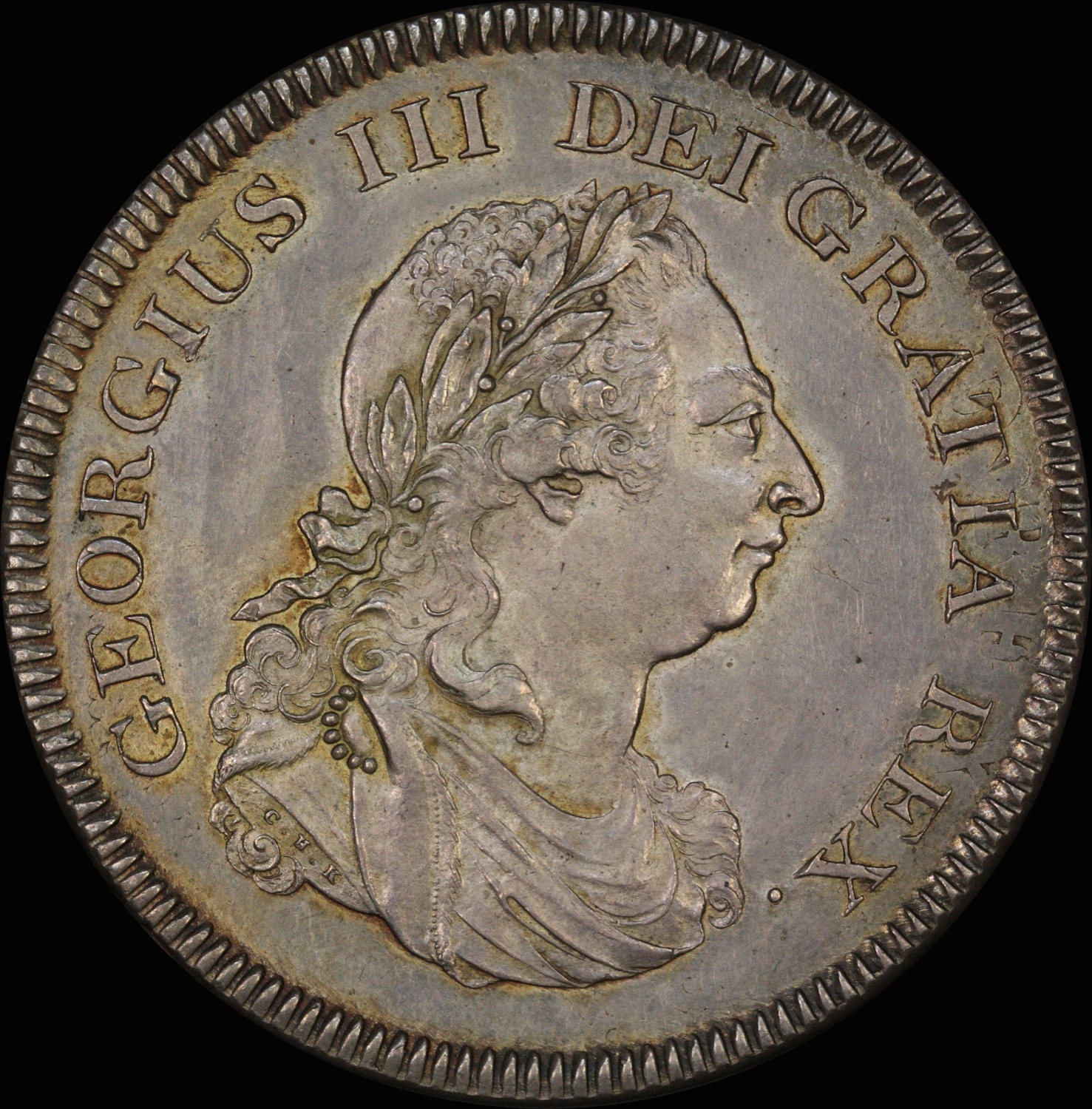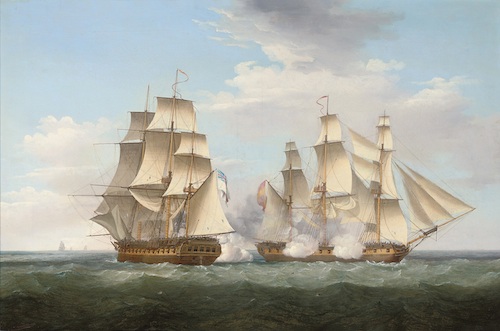The Bank of England Silver Dollars 1797 - 1817

In 1796, Great Britain was at war with Republican France and her allies - not only did England’s future depend upon the courage and skill of the Royal Navy, it was also vital that the wheels of commerce continued to turn.
The Spanish and Spanish colonial silver “dollars” counterstamped for the Bank of England between 1797 and 1811 capture the turbulence of this incredible period in British history in a unique and tangible way.
The nerve of the British population was set on edge by a series of invasion attempts by French naval forces between 1796 and 1798.
The French General Lazare Hoche attempted to land in Ireland in December 1796, however the French forces were scattered by foul weather. A further French invasion attempt in Wales in February of 1797 this time came ashore, but was captured by the local militia before a shot was fired. In an attempt to inflame the Irish Rebellion, third French force landed in Ireland in August 1798, however these forces were also soundly defeated.
Despite the feebleness of these invasion attempts, the potential danger of a French invasion of either of Ireland or England remained a real menace for the average Briton.
The average Londonder responded exactly as humans have always reacted when under threat - they chose to store their wealth close to them in a solid and tangible form, which mean that no less than 25% of the Bank of England’s reserves of gold and silver were withdrawn over the space of two days in February 1797. The cash draw-down the following week was even greater, at which time the Privy Council met and issued an order to the Bank to cease making cash payments until Parliament could decide a further course of action.
Plan A: The 1797 Bank of England Dollar With the Oval Counterstamp (March 9th 1797 to October 31st 1797 - 237 days)
The vast bulk of the silver coin held by the Bank of England at that time was made up of Spanish and Spanish colonial silver eight reales - more commonly known as dollars. These coins had circulated throughout the economy quite freely for some years, their exact value rose and fell (within a reasonably tight range) according to availability and demand.
The Privy Council’s first course of action to meet the population’s incredible demand for silver coins was to instruct staff at the Tower Mint in London to “…countermark Spanish Dollars supplied by the Bank of England with a puncheon of the king’s head.”
The “puncheon” used to mark the King’s head on these Spanish dollars was “a right-facing bust in a small oval”, previously used to mark silver plate to demonstrate that duty had been paid.
The London Times on Monday, March 6th 1797 announced: “In order to accommodate the public with a further supply of coin for small payments, a quantity of dollars, which have been supplied by the Bank, and stamped at the Mint, are now ready to be issued at the Bank…” The newly counterstamped Bank of England dollars had a stable value of 4/9, whereas Spanish dollars that did not have counterstamp continued to fluctuate in value.
The value of Spanish dollars on the London bullion market fell to 4/6 in June of 1797, which meant that if a counterfeit punch could be used on a genuine dollar, it would yield an immediate profit of about a 5%. When silver prices dropped further that summer, the counterfeiter’s profit rose to be closer to 10%.
The size of the punch was rather small, so there is little wonder that the general public had a lot of trouble trying to determine whether their coin was genuine or a counterfeit.
The prevalence of counterfeit dollars was such that the Bank of England decided to recall the dollars from circulation. Only those coins with a genuine counterstamp were to be honoured, however there was so much outrage caused by the difficulty in determining which oval marks were genuine and which were not that the Bank chose to accept all Spanish dollars at 4/9, regardless of whether they had a genuine counterstamp on them or not.
Plan B: 1804 Bank of England Dollar With the Octagonal Counterstamp (January 11th 1804 to June 2nd 1804 - 144 days)
After Napoleon shattered the fragile Treaty of Amiens in May of 1803, Britons began again hoarding the few silver coins that remained in circulation. So strong was the need for silver coins that banks were apparently paying £101 to obtain £60 worth of silver coins.
On January 2nd 1804, the Treasury issued a warrant to Royal Mint officials “… to prepare the necessary means of stamping in an octagon form, the head now used for impressing the Silver penny, omitting the Inscription, on such silver Spanish Dollars, as shall be sent to your Office from the Bank of England…”
The British press forecast that the octagonal counterstamp would again be readily counterfeited by “… the vigilant active race of manufacturers who overlook no occasion of benefit…” The extent of this second round of counterfeiting was such that plans for an amended stamping process for silver dollars was being actively discussed within a few short months of the octagonal counterstamp first being deployed. The octagonal counterstamp was used for just four months and 22 days.
Plan C: The 1804 Bank of England Silver Dollar (May 12th 1804 - March 20th 1817) 12 years, 10 months and 9 days
The rampant counterfeiting of both counterstamps underlined the ongoing public demand for official silver coins that had a stable value. The London Gazette of May 12th, 1804 announced the Bank of England’s third strategy to meet this need : “… dollars to be stamped at Mr. Boulton’s Manufactory, with His Majesty’s Head and an Inscription ‘Georgius III. Dei Gratia Rex’ on the Obverse, and Britannia, with the words ‘Five Shillings Dollar Bank of England, 1804’ on the Reverse…”
The additional design on these coins was not simply a small counterstamp on one side of the coin, but impressive designs that completely obliterated all trace of the original Spanish emblems.
Boulton and Watt continued to strike these dollars for the Bank of England right through to 1811. These Bank of England dollars were not recalled from circulation until late 1816, demonstrating that Boulton’s technology was as capable of giving confidence to the general public as it was in foiling the efforts of the counterfeiter.
The Capture of Spanish Silver Dollars by the British Royal Navy
One captivating aspect of the counterstamped dollars is that the Spanish coins they were struck from were actually on occasion claimed by the British Royal Navy as war booty following several important naval battles.
The first spanish silver dollars to be gained under such incredible circumstances occurred as a result of “The Action of 16 October 1799”. This is described as being a “relatively minor naval engagement during the French Revolutionary Wars between a squadron of British Royal Navy frigates and two frigates of the Spanish Navy close to the Spanish naval port of Vigo in Galicia”, yet resulted in “one of the largest hauls of prize money ever awarded.”
The two Spanish ships involved in the Action of 16 October 1799, the Thetis and the Santa Brigada, were in the very last stages of their journey from the Spanish colonies of South America, and were carrying a huge cargo of silver specie (bullion coins) and luxury trade goods.
As part of the war against France and her allies, the British Royal Navy was enforcing a blockade of the port at Vigo from October 15th, it was these ships that sighted the two Spanish vessels, and moved to prevent them from entering the port of Vigo. After a short naval engagement, both captured ships were taken to Britain, where their combined cargoes were transported with great fanfare to the Bank of England.
It turned out that the Thetis and the Santa Brigada were carrying no less than 2.8 million Spanish colonial silver dollars, and that the total value of the combined cargo of the two ships was eventually assessed as being very close to the value of the entire bullion holdings of the Bank of England at that time.

Such a wartime victory was naturally popular in the local press in London - the December 4th edition of “The Gentleman’s Magazine” in 1799 proudly accounced: "This day six waggons, loaded with the treasure taken in the two Spanish frigates, reached the Bank from Plymouth. At 9 o’clock, the waggons arrived at Kensington, where they were met by a Captain’s guard of the Grenadier battalion of the Guards, and the procession moved along Piccadilly, St. James’s-Street, Pall Mall, the Strand, Fleet-street, and Cheapside as follows :
- Military Band of Music
- A Detachment of the guards ;
- A commissioner of the customs, and a lieutenant of the navy, on horseback ;
- Six waggons with the treasure, drawn each by eight horses.
Each waggon had flags on it, the English surmounting the Spanish. Sailors rode on the outside of the waggons. A detachment of the 16th regiment of light dragoons closed the procession. The horses were decorated with ribbons. When the cavalcade reached the Mansion-House, the Lord Mayor, the Lady Mayoress, and the gentlemen of his household came out in front of the house, and drank from out of a gold cup, ’ Success to the British Navy,’ the band playing Rule Britannia, while the honest tars, who were regaled at the same time, gave his lordship three cheers. (Twelve or fourteen waggons more are since come up. The whole of the specie taken on board the two ships amounts to the vast quantity of forty tons.)"
It is incredible to think that a coin a collector can hold in his hand today could well have been siezed in one of the most famous lucrative naval engagements in British history - it adds a truly gripping element to the history of these already historic coins.
